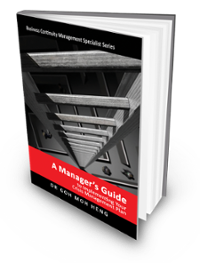Defining the Scope for a Crisis Management Program
 A well-defined scope is crucial for implementing an effective crisis management program. This involves identifying potential crises, prioritizing them based on risk, and outlining response plans for each.
A well-defined scope is crucial for implementing an effective crisis management program. This involves identifying potential crises, prioritizing them based on risk, and outlining response plans for each.
The program should consider internal and external stakeholders, with clear communication strategies for each group. A business continuity plan is also essential, ensuring critical operations can continue during a crisis.
The scope should also encompass recovery procedures for mitigating damage, restoring operations, and learning from the experience. The plan must be scalable to handle crises of varying sizes and regularly reviewed and updated.
Finally, budget allocation, team formation, and ongoing training are all necessary for a successful crisis management program.
Identify Potential Crises
- Brainstorm all potential events that could disrupt your organisation (e.g., natural disasters, security breaches, product recalls, public relations crises)
- Consider internal and external threats.
Prioritise by Risk
- Analyze the likelihood of each crisis occurring.
- Assess the potential impact of each crisis on your organization (financial, reputational, operational).
- Prioritize crises based on a risk matrix (likelihood x impact).
Internal Stakeholders
- Identify all internal groups involved in the crisis response (e.g., leadership, communication team, IT department, legal team).
- Define their roles and responsibilities during a crisis.
External Stakeholders
- Identify all external groups who may be impacted by or influence the crisis (e.g., customers, media, regulatory agencies, emergency responders).
- Determine their communication needs and expectations during a crisis.
Communication Strategy
- Develop a clear and consistent communication plan for all stakeholders (internal & external).
- Define communication channels (e.g., press releases, social media, employee town halls).
- Establish a designated spokesperson(s).
Business Continuity Plan
- Outline strategies to ensure critical business functions can continue during and after a crisis.
- Include backup procedures for data and systems.
- Consider alternative work arrangements (e.g., remote work).
Recovery Procedures
- Develop a plan for recovery after a crisis, including steps to:
- Mitigate ongoing damage.
- Restore normal operations.
- Learn from the experience and improve future preparedness.
Scalability
- Ensure the plan can handle crises of varying scales (minor incidents vs. major disasters).
- Develop procedures for activating and scaling the response based on the severity of the crisis.
Regular Review and Update
- Schedule regular reviews of the crisis management plan (e.g., annually or after a crisis).
- Update the plan based on organisational changes, identified weaknesses, or new threats.
Budget
- Allocate resources for implementing and maintaining the crisis management program.
- This includes training, equipment, and communication tools.
Team Formation
- Establish a crisis management team with clear roles and responsibilities.
- Consider cross-functional representation from various departments.
Resource
Goh, M. H. (2016). A Manager’s Guide to Implement Your Crisis Management Plan. Business Continuity Management Specialist Series (1st ed., p. 192). Singapore: GMH Pte Ltd.
Extracted from Analyse and Evaluate Sources of Risk
More Information About Crisis Management Courses
To learn more about the course and schedule, click the buttons below for the CM-300 Crisis Management Implementer [CM-3] and the CM-5000 Crisis Management Expert Implementer [CM-5].








![[BL-CM] [5] Register](https://no-cache.hubspot.com/cta/default/3893111/82024308-16f4-4491-98be-818a882c6286.png)

![Email to Sales Team [BCM Institute]](https://no-cache.hubspot.com/cta/default/3893111/3c53daeb-2836-4843-b0e0-645baee2ab9e.png)





